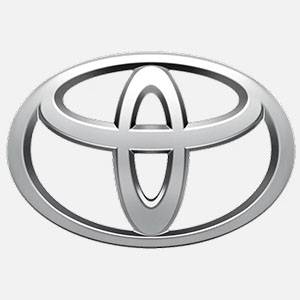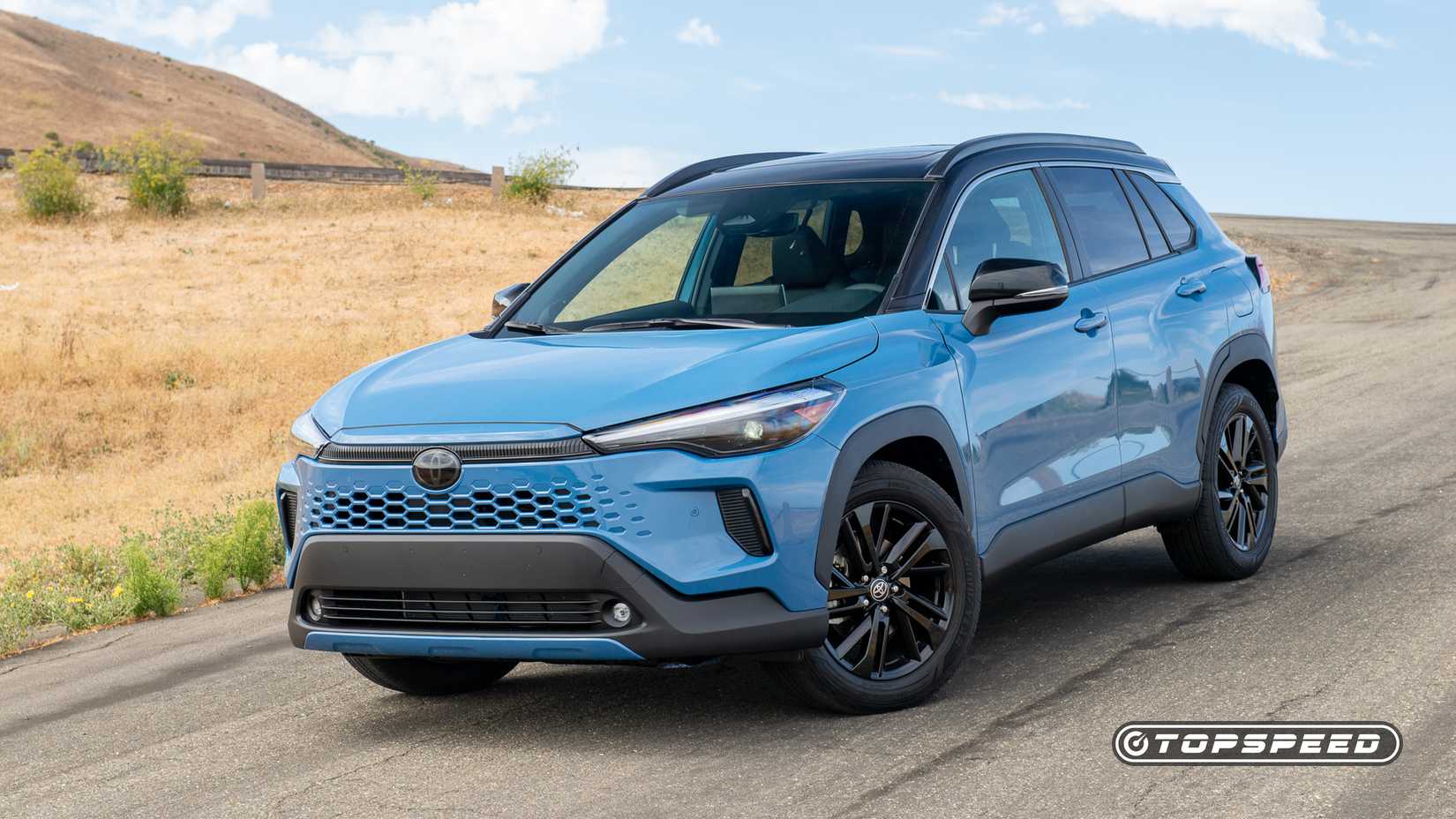When it comes to electrification, Toyota is one of the few brands that approaches it with a truly holistic strategy that focuses on multiple fueling options as opposed to going all in on full electrification. This is a plan that the Japanese brand set in motion a little over three decades ago with the original Toyota Prius, and is finally starting to bear fruit, as the company confirms one of its best sales quarters for electrified vehicles in the U.S. 2025 has been a tumultuous year for a lot of brands in the U.S. due to several reasons. This is especially true when looking at the current electrification industry.

Available Models
Toyota
- Founded
-
August 28, 1937
- Founder
-
Kiichiro Toyoda
- Headquarters
-
Aichi, Japan
- Owned By
-
Publicly Traded
- Current CEO
-
Koji Sato
This year, more consumers are considering conventional ICEs to a greater extent compared to fully electric vehicles, mainly because they are just much more of a better value proposition, especially since the clean vehicle tax rebate has now fallen away. Brands are also starting to position hybrids as a more attractive alternative by improving the overall affordability, performance, and appeal. No one is currently doing this better than Toyota, and we see the results of its impressive development and marketing when looking at last quarter’s sales charts.
To give you the most up-to-date and accurate information possible, the data used to compile this article was sourced from Toyota and other authoritative sources.
Toyota’s Impressive 2025 Q3 Sales Results
Hybrids Are Paying Off In A Big Way
Toyota Motor North America has reported a sales of 185,748 individual vehicles in September 2025, reflecting a 14.2 percent increase in volume and a 9.5 percent rise in daily selling rate compared with September 2024. Electrified models reached 85,092 units, up 8.1 percent in volume and accounting for 45.8 percent of total sales. For the third quarter, Toyota sold 629,137 vehicles, marking a 15.9 percent increase in volume and 14.4 percent in DSR compared with the same period last year. Electrified sales for the quarter totaled 282,794 units, up 10.5 percent and representing 44.9 percent of total deliveries. The Toyota division recorded September sales of 158,959 vehicles, up 13.4 percent, while quarterly results hit 537,528 units, a 16.4 percent gain.
Lexus sold 26,789 vehicles in September, up 19.4 percent, with quarterly sales rising 13.1 percent to 91,609 units. Senior vice president Andrew Gilleland said demand remains high across all segments, with vehicles selling as soon as they reach dealerships. He noted that as Toyota prepares for the next-generation RAV4, the current model continues to attract strong consumer interest.
Gilleland added that Toyota’s multi-pathway powertrain strategy, which includes hybrids, plug-in hybrids, hydrogen fuel cell vehicles, and fully electric vehicles, continues to strengthen the company’s market position and drive growth in the electrified segment, which now accounts for nearly half of Toyota’s U.S. volume.
Toyota’s Aggressive Electrification Strategy
The Japanese Brand Features The Most Expansive HEV Catalog
Toyota USA’s hybrid-strong strategy focuses on offering hybrid-electric powertrains across almost all of its model lines, rather than pushing fully electric vehicles prematurely. This approach has worked well in the U.S. because it balances efficiency, affordability, and familiarity for mainstream buyers while avoiding the infrastructure and cost challenges tied to EV ownership. By integrating its proven Hybrid Synergy Drive system into popular models, Toyota delivers strong fuel economy and lower emissions without forcing consumers to change driving habits. The brand now offers more than a dozen hybrid models, including key sellers like the RAV4 Hybrid, Highlander Hybrid, Camry, Corolla Hybrid, and the Sienna, some of which come exclusively as hybrid offerings.
|
Model |
September 2025 |
September 2024 |
2025 YTD |
|
Toyota Camry |
24,516 Copies |
22,905 Copies |
234,369 Copies |
|
Toyota RAV4 Hybrid |
12,830 Copies |
12,761 Copies |
139,446 Copies |
|
Toyota Sienna |
7,801 Copies |
6,663 Copies |
75,867 Copies |
|
Toyota Grand Highlander Hybrid |
5,329 Copies |
10 Copies |
48,563 Copies |
|
Toyota Corolla Hybrid |
2,365 Copies |
3,048 Copies |
37,135 Copies |
The RAV4 Hybrid leads the charge as Toyota’s best-selling electrified model thanks to its practicality and multi-terrain capability, while the Camry Hybrid remains one of the top midsize sedans in the country. The current-generation Prius has also regained attention for its sharper design and improved performance, appealing to both loyalists and new adopters who are looking for something a bit more aspirational. Hybrid versions of the i-Force MAX-powered Tacoma and Tundra are also drawing massive interest as buyers seek efficiency in larger vehicles without sacrificing power.
Lexus adds further volume through hybrid SUVs like the RX and NX, both of which contribute to the brand’s position at the very top of the J.D. Power Vehicle Dependability study for three years in a row. Toyota’s hybrid-first strategy works because it leverages decades of battery and motor expertise to meet tightening emissions standards while maintaining reliable, accessible vehicles that suit American driving conditions.
Why More Americans Are Considering HEV Cars
A Mix Of Efficiency, Reliability, And Affordability Makes Them Highly Appealing
Gasoline-electric hybrid vehicles are more popular among American buyers than ever before because they now deliver a practical blend of affordability, efficiency, and reliability that aligns with mainstream expectations. Just about a decade ago, hybrids carried price premiums and limited availability, but advancements in manufacturing, battery sourcing, and scale have lowered costs, making today’s models accessible across nearly every vehicle segment. Rising fuel prices and economic uncertainty have also shifted buyer priorities toward efficiency, and modern hybrids now achieve impressive real-world mileage without compromising performance.
Reliability also plays a key role, as brands like Toyota have refined their hybrid systems for decades, resulting in improved consumer trust through consistent durability and low maintenance costs. Modern hybrid batteries last longer and come with robust warranties, reducing ownership risk. Ten years ago, hybrid options were largely limited to compact cars like the Prius, but today, Toyota offers hybrid variants of popular SUVs, pickups, and sedans. The technology has become mainstream rather than niche, supported by improved drivability, seamless transitions between electric and gas power, and broader dealer availability.
Looking Forward At Toyota’s Electrification Plans
HEVs Will Remain The Focus For The Foreseeable Future
Toyota’s future electrification plans in the U.S. center on a gradual, diversified transition where hybrids remain the foundation of its business for the foreseeable future. The company continues to emphasize a multi-pathway approach that includes hybrids, plug-in hybrids, battery-electric vehicles, and hydrogen fuel-cell technology instead of relying on one solution. This strategy reflects Toyota’s understanding of the American market, where EV adoption still faces challenges related to charging access, affordability, and consumer readiness. Hybrids will continue to dominate Toyota’s U.S. lineup because they offer immediate efficiency benefits without demanding major infrastructure changes.
Toyota plans to expand its hybrid offerings across every segment, including pickups and large SUVs, with the upcoming hybrid Tacoma and refreshed Tundra leading that effort. At the same time, the company will roll out a new generation of battery-electric vehicles on its upcoming e-TNGA and BEV-dedicated platforms, including models developed under its Beyond Zero sub-brand. However, Toyota aims for hybrids and plug-in hybrids to continue representing a significant share of its U.S. sales mix well into the 2030s, as they help reduce fleet emissions and meet regulatory targets without alienating traditional buyers.
The company’s focus on affordability, reliability, and fuel efficiency positions it to retain loyal customers while gradually introducing EVs once infrastructure matures. Toyota maintains that hybrids are the most practical and scalable bridge to full electrification, offering immediate environmental gains at lower cost and with proven reliability, and a lot of competing brands are starting to jump on the bandwagon.
Source: J.D. Power








